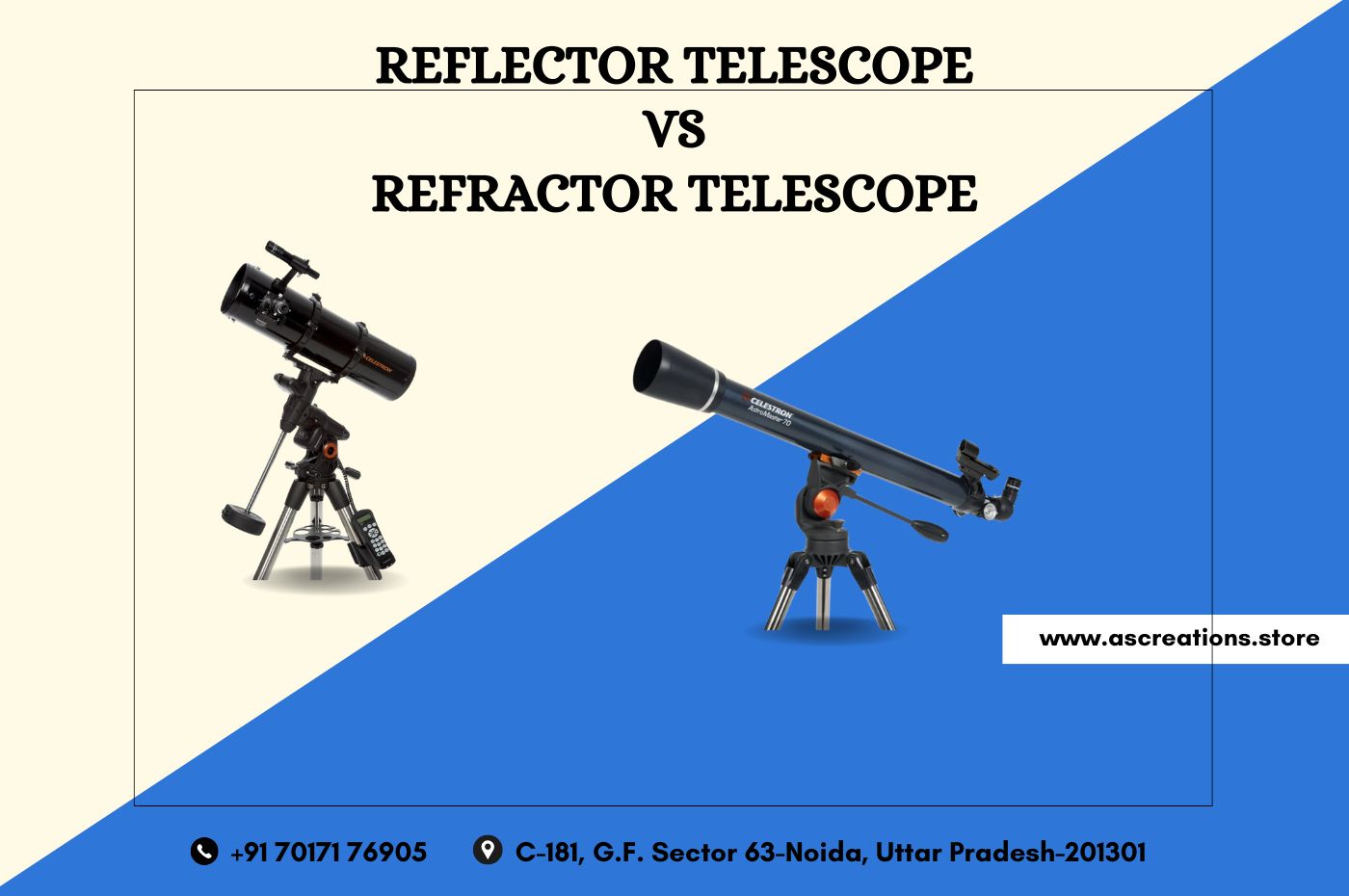Address
C-181, C Block, Sector-63, Noida, Gautam Budha Nagar, Uttar-Pradesh, 201301, India
Work Hours
Monday to Friday: 7AM - 7PM
Weekend: 10AM - 5PM
Address
C-181, C Block, Sector-63, Noida, Gautam Budha Nagar, Uttar-Pradesh, 201301, India
Work Hours
Monday to Friday: 7AM - 7PM
Weekend: 10AM - 5PM

The comparison between reflector telescope vs refractor telescope is quite confusing, especially for those who are not well-versed in astronomy. For many individuals who may not have experience with astronomical instruments, understanding these tools can be challenging without accurate information. However, for astronomers, telescopes are an integral part of their lives, serving the purpose of their favorite pursuit of diving into the universal world. Before we begin with making a comparison between reflector telescope vs refractor telescope, we must understand what a telescope is. This question may have little significance, but it is important to know how a telescope functions overall.
To see through this universal world and observe starry objects, these two types of telescopes are all we need. Refractor telescopes are made up of big magnifying glasses, whereas reflector telescopes use mirrors to gather light and focus it, allowing users to view distant objects in space. This blog will take you through all the details you should know about the best telescopes to see planets.
Unlike traditional telescopes, reflector telescopes don’t use lenses. They are constituted with mirrors that focus and gather light. The base of the telescope has a curved primary mirror that gathers light from distant objects and directs it towards a focal point.
One common kind of reflector telescope is the Newtonian Reflector telescope. It gathers light and focuses it onto a smaller, flat secondary mirror using a big primary concave mirror. Because of the secondary mirror’s angled placement, light is directed into the telescope’s side eyepiece for viewing.
It is well known that reflector telescopes, particularly Newtonian telescopes, create a clear view devoid of color distortions that some lens-based telescopes might have.
Unlike reflector telescopes that use mirrors to gather and focus light, refractor telescopes utilize lenses. This basic design is simple yet effective for observing distant objects such as stars and planets.
Light is bent, or refracted, as it passes through a convex lens at the front of a refractor telescope, known as the objective lens. This light converges at a point inside the telescope called the focus. An eyepiece lens located at the rear of the telescope magnifies the image for viewing.
Investing in a refractor is perhaps a better choice for those interested in astronomy. Its unique optic design, which is capable of capturing deep space objects like galaxies and nebulae, is the reason behind this. If you want to avoid chromatic aberrations, go with an apochromatic model.
If you are interested in viewing brighter astronomical objects such as the moon or planets, a refractor telescope would be a better option. However, reflectors are typically the best option for most visual observations due to their larger aperture at a comparable cost. They can also be excellent for deep-sky astrophotography, but they require significant maintenance and careful setup. Therefore, we do not recommend them for beginners. Conversely, a refractor can be excellent for visual observation, however, it can also be quite expensive.
The best option for observing planets is often considered to be a refractor telescope. It is easier to observe characteristics on planets like rings and moons because their superior optics provide sharp, detailed images. For example, for clear viewing, a refractor with a minimum aperture of 4 inches is recommended.
The Newtonian type can also function well if you prefer a reflector telescope, particularly if it has a wider aperture. This larger aperture helps capture more light, enhancing the quality of photographs of distant planets.
Each type of telescope—reflector telescope vs refractor telescope—has advantages of its own. For those who want to explore the planet in the night sky, A&S Creations suggests a refractor telescope. With a 4-inch refractor, you can see the finest details. Also amazing intricacies including the fascinating features of lunar surfaces.
A&S Creations Newtonian Reflector, on the other hand, can be a great option if you are interested in deep sky studies due to its larger viewing area. However, keep in mind that reflectors need a bit more maintenance.
A&S Creations is ready to help you select the ideal instrument for your celestial explorations, regardless of the telescope you end up choosing. Come explore your favorite equipment with us now!